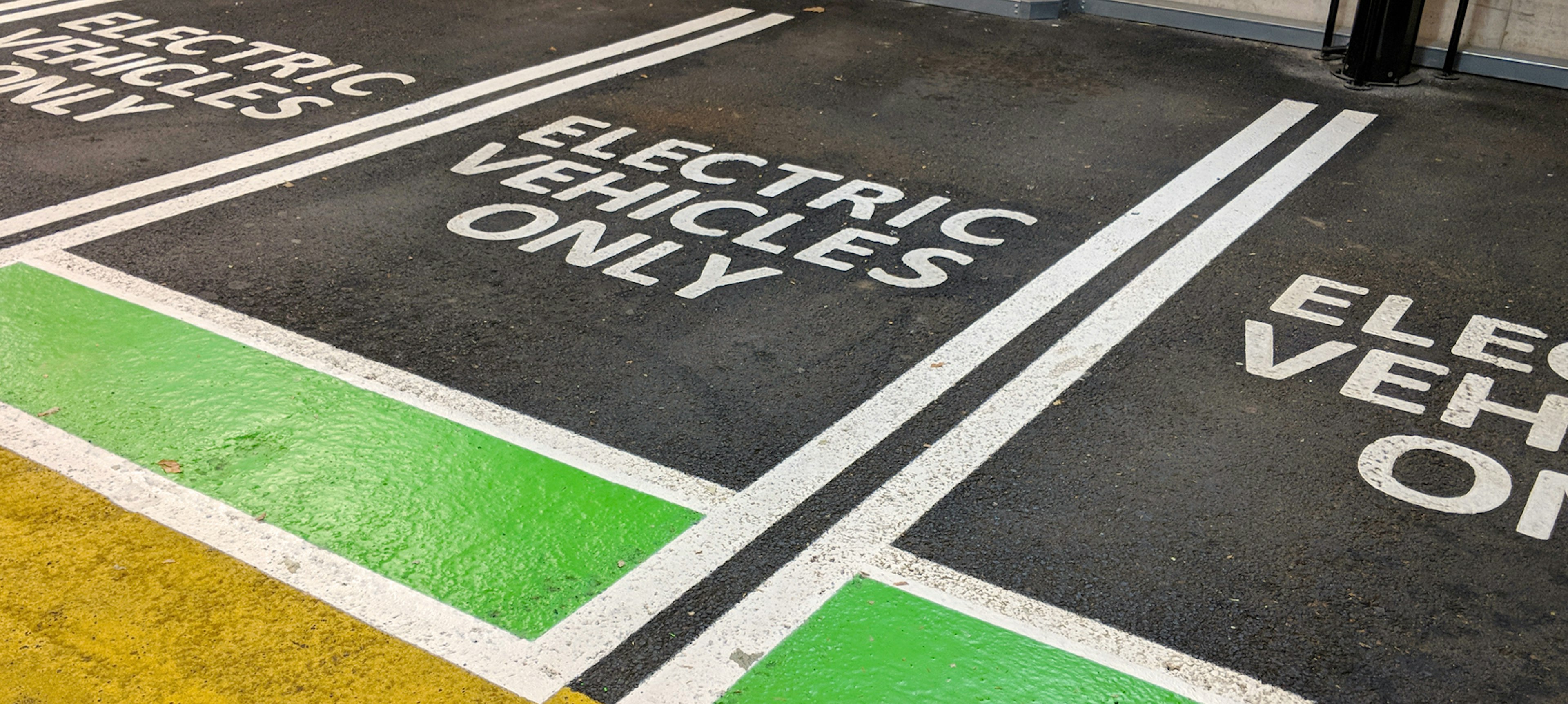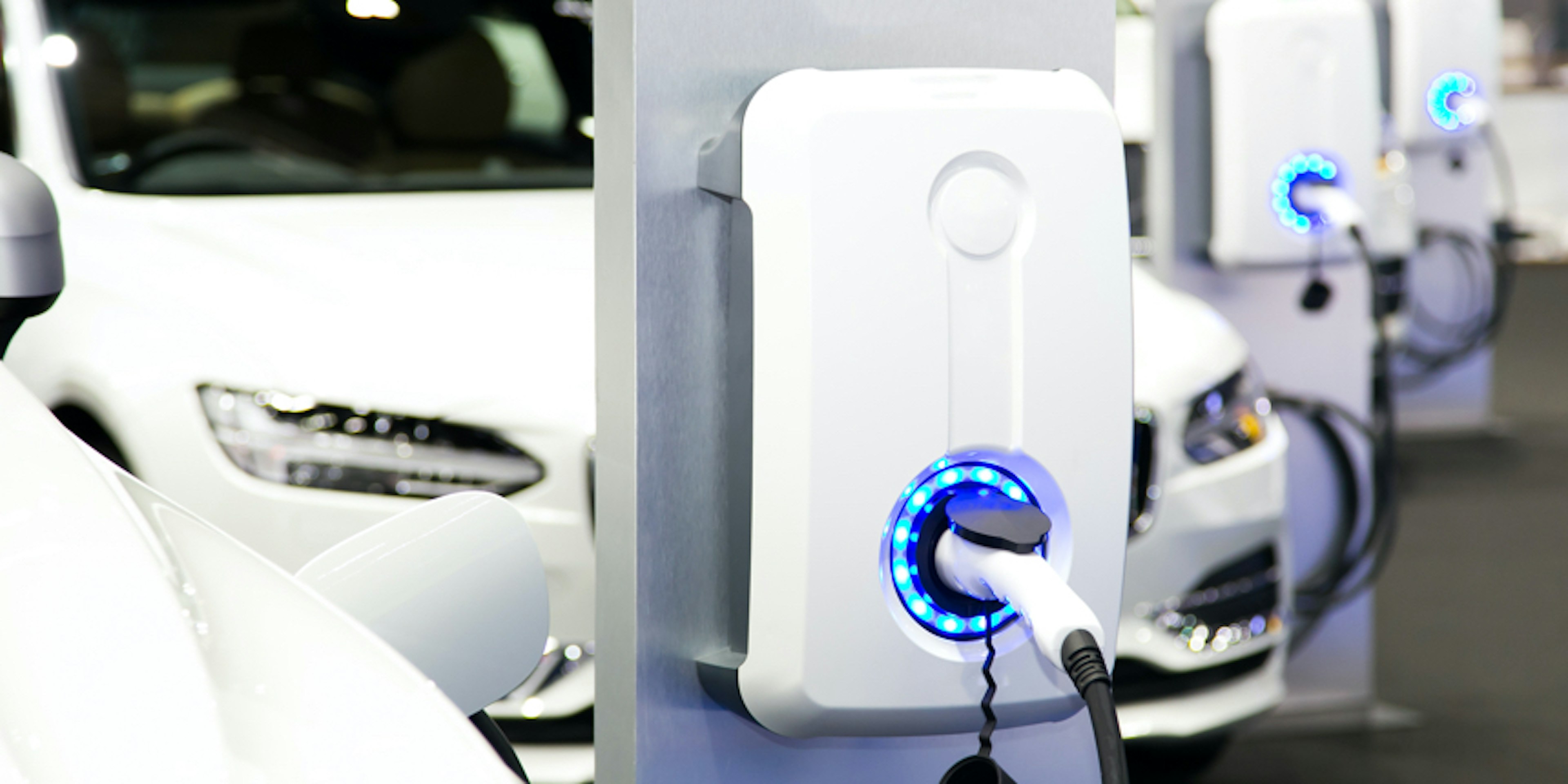Auto manufacturers continue to ramp up electric vehicle (EV) production. More and more governments worldwide are offering subsidies, tax exemptions and other incentives for EVs. The upfront cost of EVs is falling as their popularity and numbers rise and battery costs decrease. And several countries, from China to the U.K., are proposing bans on gas and diesel car sales within the next twenty years—some as soon as 2025.
With so many signs pointing to EVs as the preferred mode of mobility in the not-so-distant future, is it time to consider EVs for your fleet?
EVs vs. internal combustion engine (ICE) vehicles.
According to the US Department of Energy’s Office of Energy Efficiency and Renewable Energy, “EVs convert over 77% of the electrical energy from the grid to power at the wheels. Conventional gasoline vehicles only convert about 12%-30% of the energy stored in gasoline to power at the wheels.” Clearly, EVs are the hands-down winners when it comes to energy efficiency.
EVs make up less than 1% of the U.S. vehicle market right now, but sales of EVs and hybrids are growing—and the price difference between them and ICE vehicles is expected to narrow significantly. Since keeping your fleet costs down is a top priority, does it make economic sense to replace your conventional vehicles with more expensive EVs? For the right answer, you need to look at the big picture.
The total cost of ownership for EVs is falling.
It has taken a while for EVs to reach price parity with ICE vehicles, but you no longer have to pay a huge premium for a quality EV. Manufacturers like Chevrolet, Hyundai, Nissan and Tesla have all cut prices on their EV offerings. According to a recent report from Deloitte, the total cost of owning an EV for private buyers is already less than for the ICE equivalent.
Why EVs are a more affordable option in the long run
- Charging an EV costs ten times less than gassing up⎯the cost is further reduced when you charge at non-peak hours.
- An EV is more reliable and cheaper to maintain since it has only 20 or so moving parts whereas an ICE vehicle has an average of 2000+.
- EV powertrains can last 500,000 miles or more⎯that’s at least twice as long as an ICE powertrain.
- The upfront purchase price for EVs is steadily dropping to that of ICE vehicles largely due to the falling cost of lithium-ion batteries.
The Inflation Reduction Act is accelerating electrification.
The Inflation Reduction Act (IRA) of 2022 was a landmark piece of legislation that aims to move the U.S. closer to an electrified future through generous tax credits and investments in charging infrastructure. Some of the changes include:
- Extended and expanded EV tax credits: The Clean Vehicle Credit of up to $7,500 on qualifying clean vehicles has been extended to 2032. It also removes the manufacturer sales cap, meaning that people wanting to make the switch to an EV can again take advantage of the credit on manufacturers that had previously reached their sales limits.
- Used EV tax credit: The IRA also introduced tax credits for up to $4,000 or 30% of the cost of a used EV that’s at least two years old and not purchased for resale.
- Commercial EV tax credit: For the first time ever, commercial EVs will be eligible for tax credits to promote their adoption by transportation, logistics, and other industries. The eligible credit amount per qualified commercial EV is either 30% of the sales price or the incremental cost of the vehicle, whichever is less.
The IRA also addresses the need for more charging infrastructure. The Alternative Fuel Vehicle Refueling Property Credit is a general business tax credit for companies installing EV chargers; it can offset up to 30 percent of the total costs of purchase and installation, up to $100,000 per charger.
For a detailed list of tax credits and incentives by area, or for a list of available EV charging station locations near you, visit the U.S. Department of Energy’s Alternative Fuels Data Center.
EVs can boost your image with customers and employees too
EVs showcase the latest vehicle technology and release zero emissions. These factors help you look good to customers and employees who are drawn to forward-thinking, tech-savvy, environmentally responsible companies. At the same time, building a more energy-efficient fleet with EVs helps you meet your company’s goals for reducing waste.
Auto manufacturers continue to rev up EV production
Several automakers plan to electrify large portions of their vehicle offerings within the next decade—with some announcing goals for fully electrified lineups.
- GM aims to have 20 EVs available in the U.S. by 2025.
- Ford plans to produce more than 2 million EVs annually by 2025.
- Hyundai has committed to all its new vehicles being purely electric starting from 2025 with fuel-cell EVs and battery EVs.
- Mercedes-Benz announced that all newly launched vehicle platforms will be electric-only starting in 2025
- Volvo says half of all its sales will be electric by 2025.
- Volkswagen will launch 70 EVs and 60 hybrids by the end of the decade.
As EV production increases, EV sticker prices decrease and the technology advances (e.g., longer battery range). In particular, major strides have been made in designing and engineering SUVs and pickup trucks⎯the most popular automotive models in the U.S.
Tesla, the current leader in EV sales, announced a delivery event for the long-awaited Cybertruck in 2023. Ford, GMC, Hyundai, Kia, Bollinger, Mercedes-Benz and Volvo all have electric trucks, SUVs, or crossovers on the market or on the horizon. And startup company Rivian, which won a $700M investment led by Amazon, has launched the all-electric R1T pickup truck. Many companies, including UPS, Federal Express and DHL, are also tapping into the advantages of EVs for their fleets.
Think you’re ready to add EVs to your fleet? Think Mike Albert Fleet Solutions.
Whether you’re part of a private company or a municipality, Mike Albert will help you procure, finance and manage the right EVs for your organization. We provide expert consultation on everything you need to know about EVs and electric vehicle supply equipment (i.e., charging stations) including:
- Features and benefits/pros and cons of various EV models and equipment
- Supply chain challenges of certain EV models
- New EV vehicles on the horizon to consider
We also offer you a variety of financing options. Once you select your EVs, we match you with the financing that best meets your business objectives. Then we stack all the applicable federal, state and local tax credits and incentives into your financing for maximum savings.
Follow this link to learn more about fleet electrification.
Skills covered in the class
Operational Efficiency
Fleet Electrification
Vehicle Life Cycle Analysis
Vehicle Specification
Did you enjoy this class?
Share it with your organization and colleagues.



